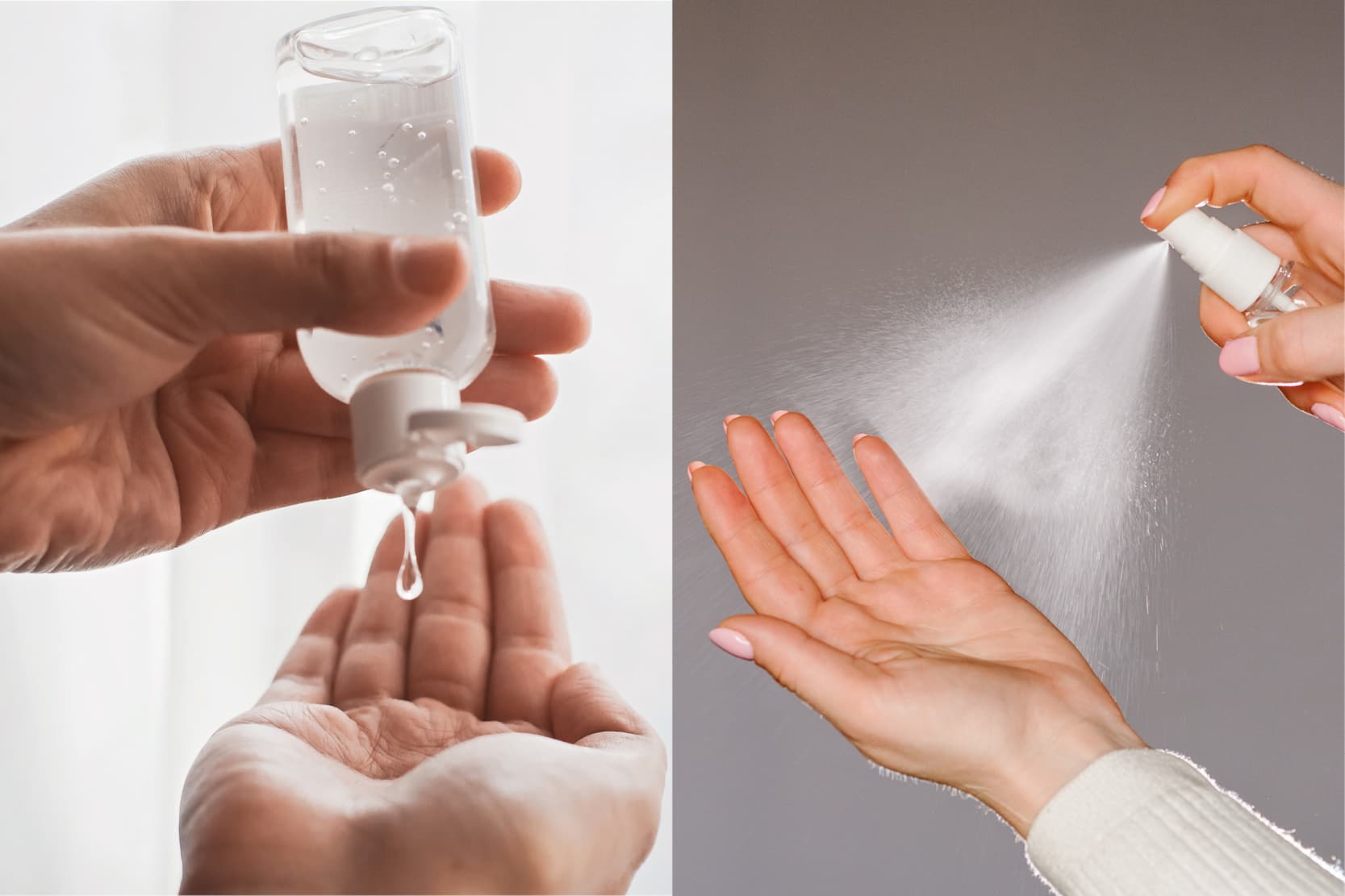
The EPA (United States Environmental Protection Agency) defines the antimicrobial actions of “sanitizers” and “disinfectants” as follows:
Sanitizing merely removes dirt and reduces germ count through mechanical action[1],[2]. This practice is not intended to kill viruses.
Disinfection on the other hand prevents or arrests the development or action of micro-organisms by inhibiting their proliferation or destroying them[3].
The difference between germs and bacteria
So what is the difference between germs and bacteria?
All micro-organisms – viruses, bacteria and fungi – capable of causing disease in humans can be defined as germs.
While many germs are innocuous or even beneficial, some can cause infections and pathologies in humans.
Micro-organisms are everywhere: on the surfaces of objects around us and even on our bodies. They come into contact with our internal organs via external access routes and through various types of transmission.
Hand hygiene as a way of preventing infection
Contact with the hands is one of the main access routes for micro-organisms to enter the body. This is why it is so important to use specific sanitizers when washing hands.
Hand hygiene significantly reduces the quantity of bacteria present. Suitable anti-microbial products can also have a persistent bacteriostatic effect and inhibit bacterial proliferation.
The germicidal action of antimicrobial soaps
Normal soaps (i.e. those with no antimicrobial ingredients) have a very limited antimicrobial action: they remove transitory bacterial flora from the surface of the skin but are ineffective for healthcare professionals involved in medical or surgical procedures.
Alcohol-based antimicrobial soaps contain isopropyl alcohol, ethanol, and n-propyl alcohol. The antimicrobial action of these alcohols is due to their ability to denature proteins.
Solutions of between 60% and 95% alcohol are the most effective because they have an excellent germicidal action against gram-negative and gram-positive bacteria, including multi-resistant pathogens, Mycobacterium tuberculosis and various fungi.
Alcohols have a very rapid but non-persistent action when used as hand disinfectants. Nevertheless, bacterial re-proliferation is a slow process due to the sub-lethal effect that alcohols have on certain skin bacteria[4].
Choosing alcohol-based sanitizers and disinfectants
If the hands are not visibly dirty (i.e. do not require sanitizing), they can be sanitizing using alcohol-based substances. The use of sanitizers and alcohol-based disinfectants is determined by three elements:
1. They are more effective than soaps in reducing the number of pathogenic micro-organisms on the hands.
2. They have a rapid action and are therefore easy to use.
3. They cause less irritation than frequent soap and water washes.
Hand hygiene is extremely important in preventing nosocomial infections, but what exactly is the difference between a sanitizer and a disinfectant?
Only disinfectant products have a certified antimicrobial action, and this must be stated on the label. Disinfectants only have the action for which they have been developed and tested.
In other words their disinfectant activity is specific to the type of micro-organism identified on the label. This means that a product with bactericidal action may not be effective against viruses, and vice-versa.
In Italy, disinfectants are sold as Medical-Surgical Products (MSPs), and must be authorised by the Ministry of Health. Every MSP is assigned an authorisation number which must appear on the packaging. As MSPs, the labels of skin disinfectants must describe the specific disinfectant action and state the methods and quantities needed to ensure effectiveness.
These rules for the sale of disinfectants only apply to Italy: other countries may have different regulations. In any case, the same distinction between sanitizer and disinfectant applies, in accordance with the literature.
Conclusions
Hand hygiene prevents healthcare-related infections and the transmission of potentially pathogenic micro-organisms in clinical and residential settings.
Bibliography
[1] P. Zunino, La disinfezione in ambito odontoiatrico
[2] https://www.iss.it/en/detergenti-disinfettanti-e-disinfestanti
[3] Finzi G, Aparo U L, Benvenuto A, Cantaro P, Cugini P, D’Alessandro D, Kob K, Lazzari C, Montanile A, Pellissero G, Pili S, Pellicanò A. Linee guida per il corretto uso degli antisettici – disinfettanti. 2009; 9
[4] https://www.cdc.gov/mmwr/PDF/rr/rr5116.pdf
Do you want more information on Zhermack Dental products and solutions?
Contact us

 Zhermack SpA has been one of the most important producers and international distributors of alginates, gypsums and silicone compounds for the dental sector for over 40 years. It has also developed solutions for the industrial and wellbeing sectors.
Zhermack SpA - Via Bovazecchino, 100 - 45021 Badia Polesine (RO), Italy.
Zhermack SpA has been one of the most important producers and international distributors of alginates, gypsums and silicone compounds for the dental sector for over 40 years. It has also developed solutions for the industrial and wellbeing sectors.
Zhermack SpA - Via Bovazecchino, 100 - 45021 Badia Polesine (RO), Italy.


